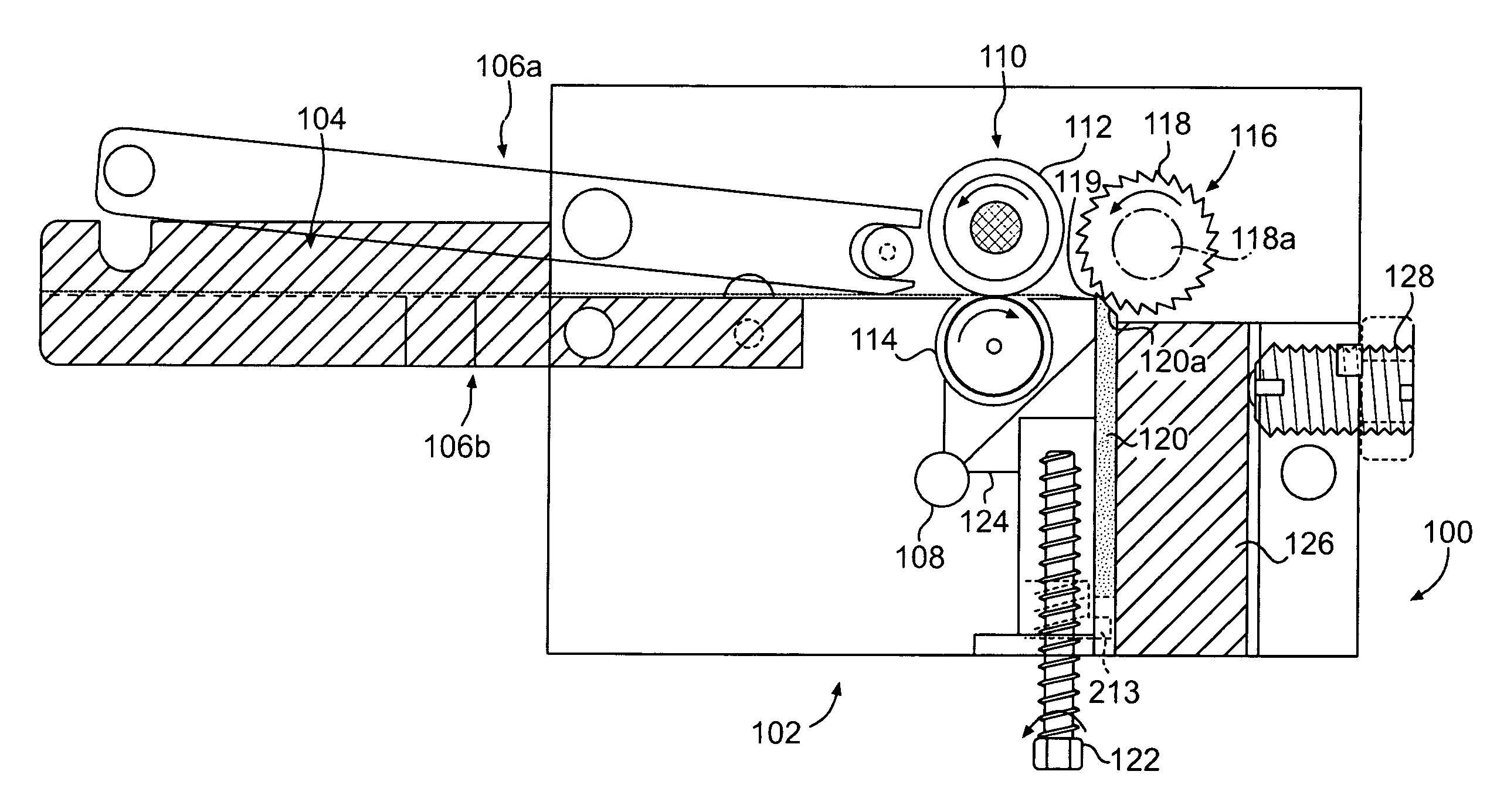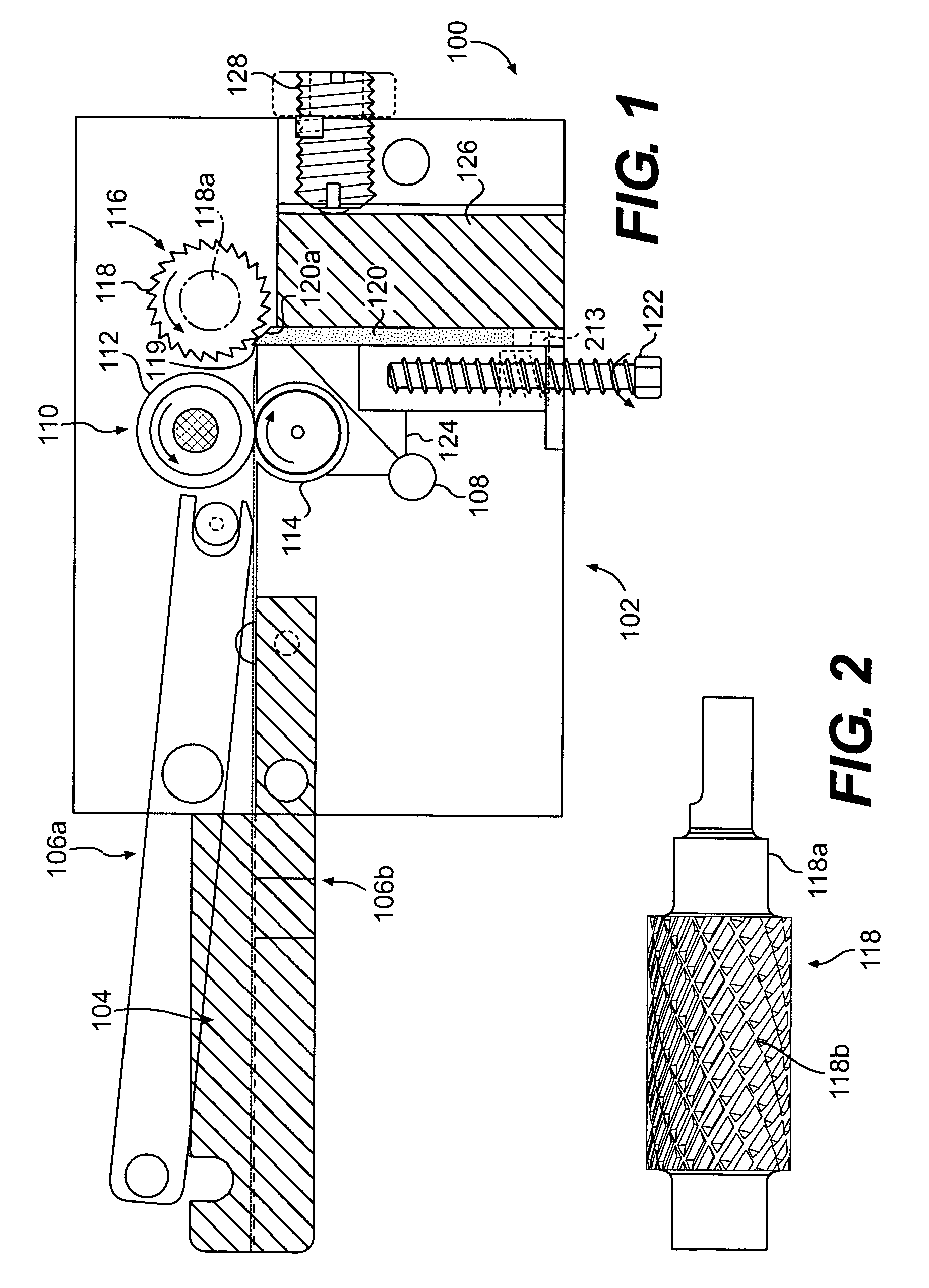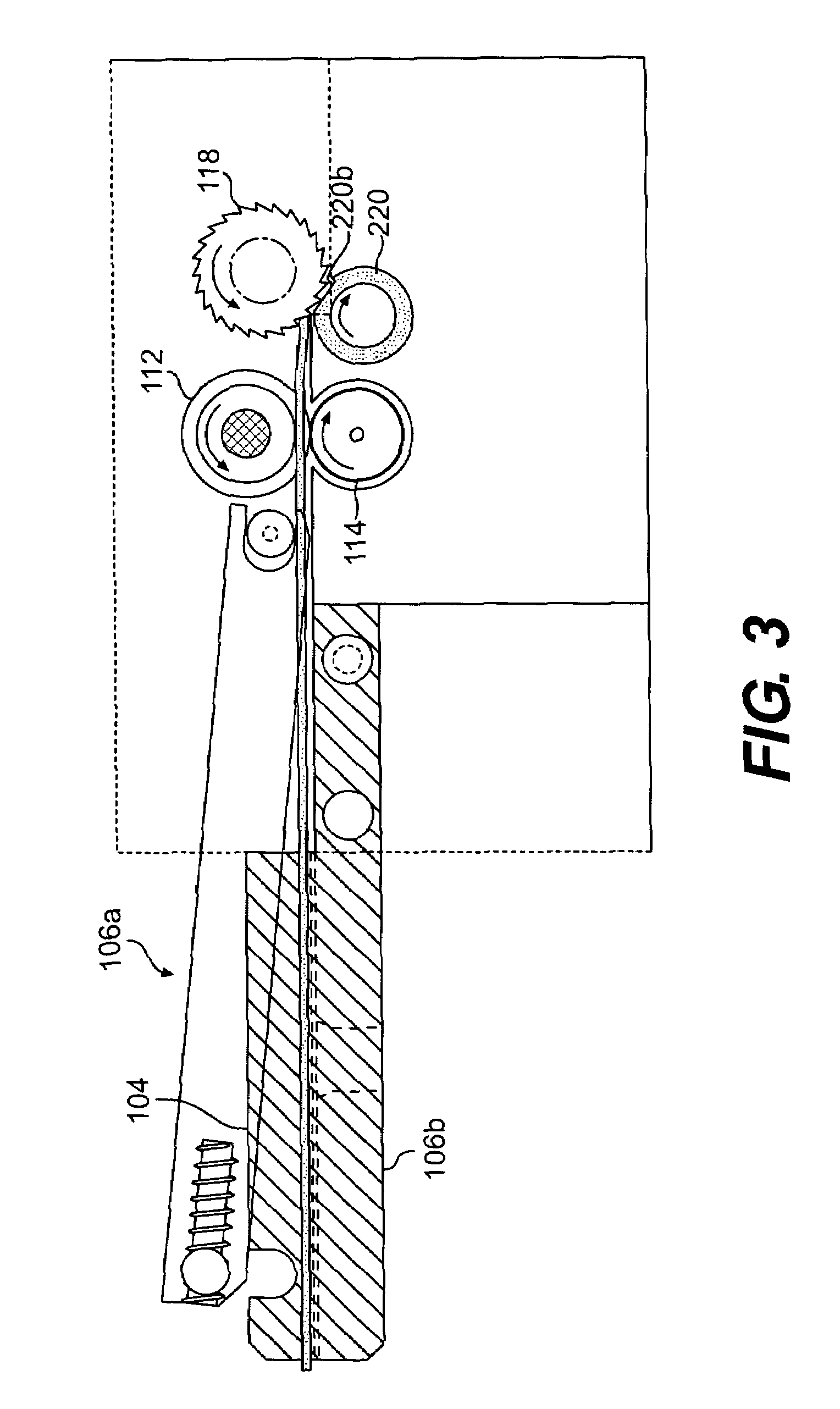Self-healing cutting apparatus and other self-healing machinery
a cutting apparatus and self-healing technology, applied in the field of machines, can solve the problems of many known cutting systems being prone to wear and failure, and none of the current known and used systems are capable of completely destroying a document or other sensitive material into an information-unrecoverable form using a simple method, and achieve the effect of reducing vibrations caused during a cutting procedure and simple spring-driven pressur
- Summary
- Abstract
- Description
- Claims
- Application Information
AI Technical Summary
Benefits of technology
Problems solved by technology
Method used
Image
Examples
example 1
[0153]A prototype machine (and, subsequently, a production machine) was built, Model KD-100 (Key Tape Disintegrator), one instance of the more general class of machines which the present inventor calls “Micro-Disintegrators”. This class of machines is so named for two principle reasons: 1) Because the machines are physically small, considering their function, 2) The output (or “residue”, as it is designated in the art) produced by such machines is composed of extremely small dust-like particles, similar to those from a disintegrator, but finer. The actual KD-100 resembles that depicted in FIG. 1.
[0154]It utilizes only a single motor which performs all four of these functions: a) drives the cutter; b) drives the vacuum dust collection system; c) drives the positively-controlled material capstan feed (through gear trains); d) drives the extremely slow and gradual upwards motion of the sacrifice plate (through an additional gear train). The actual machine is in full compliance with Dep...
example 2
Round-Bar Sacrifice Material
[0156]In this example there is assumed a round sacrifice bar ⅜″ diameter, or 1.17″ circumference. A full revolution of the bar would present 1.178 million micro-inches to the cutter. At about 13 ft / minute, the sacrifice feed would be 30×13 (or 390) micro-inches circumferentially per minute, which works out to 390 / 1,178,000 (or 0.000331) sacrifice bar revolutions per minute, or 0.0198 (or 1 / 50.34) sacrifice bar revolutions per hour. The bar will last about 50 hours, or 46,800 feet. In this case, a feed rate of approximately 30 micro-inches of sacrifice material per foot length of destroyed material, or about 400,000 inches of destroyed material per inch of sacrifice material is provided, for this round-bar sacrifice material example.
[0157]This may be compared to about 0.500 sacrifice JACKSCREW revolutions per HOUR in a sacrifice PLATE embodiment. Correspondingly, more worm-gear drive ratio reductions are needed to operate with the round bar.
example 3
DocuStroyer / CRYPTOSTROYER Paper-Destruction Machine
[0158]A destruction machine for to-be-destroyed 8½ inch-wide paper was constructed according to FIGS. 12A-12D. A cutter was made from cobalt steel, coated with titanium nitrate (to enhance its hardness). A cutter as in FIG. 11 was used. The cutter had raised cutting edges with vertical serrations, with a 0.007 inch offset pattern to the serrations. A 9-inch wide sacrifice material of 3 / 16 inch thick soft aluminum was used. A destruction machine for 8½ inch wide paper was constructed as described above with regard to FIGS. 11-12D.
[0159]The inventive DocuStroyer / CRYPTOSTROYER machine was tested on 10 paper pages in rapid sequence, fed one at a time (generating 10 end-strips). The end-of-page strip processed through the secondary shredder. All that remained of the 10 paper pages was powdery dust.
[0160]In addition to the excellent destruction capability provided by the DocuStroyer / CRYPTOSTROYER device of this example, the inventive mach...
PUM
 Login to View More
Login to View More Abstract
Description
Claims
Application Information
 Login to View More
Login to View More - R&D
- Intellectual Property
- Life Sciences
- Materials
- Tech Scout
- Unparalleled Data Quality
- Higher Quality Content
- 60% Fewer Hallucinations
Browse by: Latest US Patents, China's latest patents, Technical Efficacy Thesaurus, Application Domain, Technology Topic, Popular Technical Reports.
© 2025 PatSnap. All rights reserved.Legal|Privacy policy|Modern Slavery Act Transparency Statement|Sitemap|About US| Contact US: help@patsnap.com



